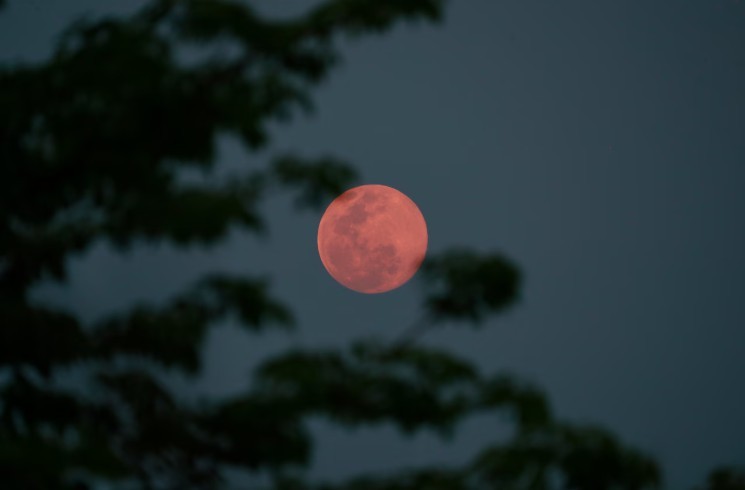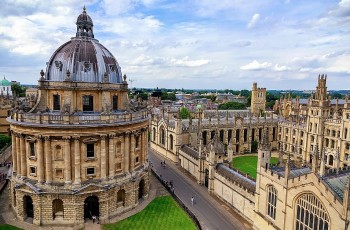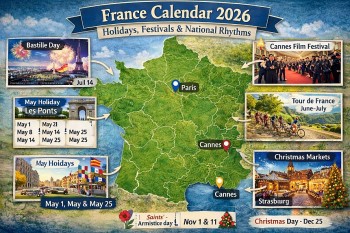Astronomical Events In December 2023 and Influence on 12 Zodiac Signs
 |
| Full List of Astronomical Events In December 2023 |
In the southern hemisphere, December is warm and sunny, while in the northern hemisphere it is cold and dark. December is also one of the best months of the year for amateur astronomers and stargazers.
December 2023 is also a busy month in the night sky. There are the usual (and impressive) meteor showers, as well as close encounters and occultations of the moon with almost all of the visible planets and one that you need special equipment to see. Another great time to see a nearby galaxy is on the December Solstice, which marks the start of a new season. In short, this month's cold, clear skies give us a lot of reasons to bundle up and go outside.
Full List of Astronomical Events In December 2023
December 2 is the best day to see the Pheonicid meteor shower.
The Geminids are the most active meteor shower in December, and the Ursids are the second most active but still impressive in late December. However, the first meteor shower of the month happens on the night of December 2nd. The Phoenicid Meteor Shower is at its strongest tonight, with only a few meteors per hour.
Most people in North America won't be able to see the Phoenicids because they will be below the horizon. This is because the radiant point of the star Phoenix can be seen best from the equator and the southern hemisphere.
Look up at the stars if you're in Central and South America, Southern Europe, the Middle East, Africa, Southeast Asia, or Oceania this month. You might see a different meteor shower.
December 4: Mercury is farther to the east than it has ever been. At 21.3 degrees east of the Sun, Mercury is the farthest from the sun in the eastern sky. Tonight is the best time to see Mercury because it will be higher in the sky than any other time of the day. Find it low in the western sky right after the sun goes down.
December 6 is the best day to see the φ-Cassiopeid meteor shower.
If you want to see meteors again, you might want to go outside in the morning of December 6th. The best time to see the φ-Cassiopeid meteor shower is tonight. It will be in the same part of the sky where Comet Borisov can be seen.
Watch for the bright spot in the sky that is part of the constellation Cassiopeia to try to find φ-Cassiopeid meteors. From here, you might only see a few meteors an hour. From the way the earth turned on December 6th night, it looks like most of them will have short tails as they come right "at" us.
If you go outside to look for these meteors, the waning crescent moon will get in the way a little, but not too much.
READ MORE: Difference Between Astrology and Astronomy
December 7: The peak of the Puppid-Velid meteor shower is on December 7.
Are you sick of seeing meteors yet? The Puppid-Velid meteor shower, which isn't very well known, will be at its peak on December 7.
If you're at the right latitude, you might be able to see a few meteors an hour this night. They come from a point in the sky between the Puppis and Vela constellations. As night falls, the radiant point of the shower will be below the horizon for most of us in the northern hemisphere. However, people further south may be able to see a few meteors if the conditions are right.
December 8: Mercury at its highest point in the evening
We just recently saw Mercury for the first time earlier this year, so I'm always excited when I can get outside and try to see it before sunrise or after sunset. In December, your chance is after sunset.
Mercury is so close to the sun that we can only see it when it is "highest," which means it is visually farthest from the sun. Because Mercury's orbit lasts 88 days, this happens in cycles. Sometimes Mercury reaches its "peak" in the morning, and other times in the evening.
In any case, Mercury will be 10° above the western horizon just after sunset on December 8th. Right now is a great time to go outside and look for the tiniest planet.
December 9: The most meteors from the Monocerotid shower fall on December 9.
For people in the southern hemisphere who like to look at the stars, here's another meteor shower! From the bright spot in Monoceros, look for meteors all night on December 9th. Monoceros is a faint constellation that many people don't know about. To find it, look between Orion in the west, Gemini in the north, Canis Major in the south, and Hydra in the east.
It depends on your latitude and the time of day that you want to see this that the radiant point will be above the horizon. You should use a star-finder app.
December 12: There is a new moon. The Moon will be on the same side of the Earth as the Sun, so you won't be able to see it at night. At 23:33 UTC, this phase takes place. Since there is no moonlight, now is the best time of the month to look at faint things like galaxies and star clusters.
December 13 and 14: Geminids Meteor Shower. It is the Geminids that are the best meteor shower. Many people think it's the best meteor shower in the sky. At its peak, it sends out up to 120 different colored meteors every hour. It is made up of pieces left over from an asteroid discovered in 1982 called 3200 Phaethon. It happens every year from December 7th to December 17th. This year, it's at its strongest on the 13th night and 14th morning. The Geminids should have a great year. Since the moon is almost new, the sky will be dark, making for a great show. The best place to watch will be somewhere dark after midnight. Meteors will come from the constellation Gemini, but they can show up anywhere in the sky.
December 15: The Orion Nebula is in a good spot as of December 15.
The Orion Nebula will be easy to see in the sky on the night of December 15th. Around midnight local time that night, Orion will be at its highest point. The best part is that most people can see Orion. If you're between 64°N and 75°S, you can try to find it!
December 16: It is the peak of the Comae Berenicid meteor shower on December 16.
The Comae Berenicid meteor shower will be below the horizon for most people in the northern hemisphere. The meteor shower will be at its best for people in the southern hemisphere on the nights of December 15th and 16th. The peak will probably happen between midnight and 2am on December 16th. At this time, up to three meteors can be seen every hour from the bright spot in the constellation Leo.
There will be the most meteors in the December Leonis Minorid shower on December 20.
There are meteors everywhere! The December Leonis Minorid Meteor Shower is one of the less well-known and less active of the month. However, it's still a fun astronomical event to see if you're outside on a dark winter solstice celebration.
December 20: Look for up to three meteors an hour from the radiant point in Leo Minor on the night of December 20. For most people, the constellation will be high in the southern sky.
December 21, 22, and 23: Ursids Meteor Shower. The Ursids are a small meteor shower that sends out between 5 and 10 meteors every hour. It is made up of dust grains that comet Tuttle, which was found for the first time in 1790, left behind. It runs every year from December 17th to December 25th. This year, it's at its strongest on the night of the 21st and the morning of the 22nd. This year, most of the faintest meteors will be blocked by the going-around gibbous moon. Still, you should be able to catch a few good ones if you wait. The best time to see it is just after midnight, far from city lights and in the dark. Meteors can show up anywhere in the sky, but they will most likely come from the constellation Ursa Minor.
December 22: The December Solstice is on December 22. The December solstice takes place at 03:21 UTC. The Earth's South Pole will be tilted toward the Sun, which will be directly over the Tropic of Capricorn at 23.44 degrees south latitude. The Sun will be at its most southern point in the sky. Yesterday was the first day of winter in the Northern Hemisphere and today is the first day of summer in the Southern Hemisphere.
December 23 is the first day of the Ursid meteor shower.
Even though the Geminids are the most famous meteor shower in December, don't forget that the Ursids also happen, with their peak this year on December 23. From December 17th to December 26th, the Ursids happen. This year, people in the northern hemisphere might be able to see Ursids all night long.
To find Ursa Minor, look for the North Star. Then, look across the whole northern sky to see if you can see these meteors as they happen. Due to the fact that Ursa Minor is a circumpolar constellation, you can look for meteors all night long. Unfortunately, the moon will be in its waxing gibbous phase, which makes it very bright if the sky is clear, so that could get in the way.
The full moon is on December 27. The Moon will be on the other side of the Earth from the Sun, so the whole face of the Moon will be lit up. At 00:34 UTC, this phase takes place. Native American groups from long ago called this full moon the "Cold Moon" because it happened at a time of year when the nights got long and dark. The Long Nights Moon and the Moon Before Yule are other names for this moon.
How to Observe Astronomical Events
Dark Sky Locations: For the best celestial views, look for areas with little light pollution.
Telescopes and Binoculars: Use telescopes or binoculars to enhance your stargazing experience, especially during eclipses.
Keep an eye on the weather forecast, as clear skies are required for optimal celestial viewing.
Astronomy apps can be used to identify constellations, planets, and upcoming celestial events.
Conclusion
With longer nights and clearer skies, December is a great month to explore the wonders of the night sky. December is a great month for astronomy because it has a lot of meteor showers, close encounters with astronomical objects, and the December solstice, which is the shortest day of the year or the longest night for many astronomy activities.
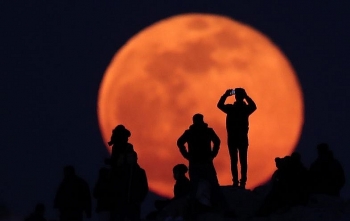 What is the Full Moon - The Impact on 12 Zodiac Signs What is the Full Moon - The Impact on 12 Zodiac Signs Since ancient times, the full moon phenomenon has been connected to the field of astrology through numerous enigmatic tales. |
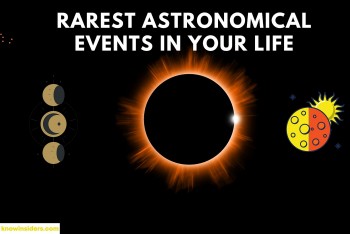 11 Rarest Astronomical Events You Must Know 11 Rarest Astronomical Events You Must Know The galaxy has long been a mystical idea, with phenomena like supermoons, eclipses, and meteor showers being incredibly uncommon occurrences. A few of them only ... |
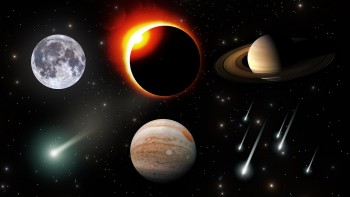 The Most Important Astronomical Events In Every Month of 2024 The Most Important Astronomical Events In Every Month of 2024 There are lots of expected astronomical events in 2024. Are you excited to wait for them? Mark your calendar, grab your telescope or binoculars, and ... |


